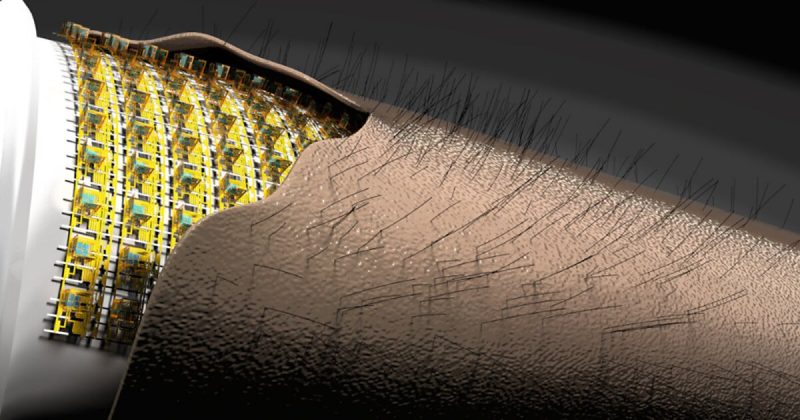Skin, our body’s largest organ helps us in feeling all the sensations such as cold, hot, smooth, itch, pain, etc. Our sense of touch is controlled by a huge network of nerve endings and touch receptors in the skin.
Now researchers from the Technical University of Chemnitz in Germany and the Leibniz Institute for Solid State and Materials (IFW) in Dresden a new type of electronic skin (e-skin). It is a thin-film material with tiny embedded hairs that can specifically perceive touch and the direction it moves.
According to scientists, e-skin has electronic properties that allow it to perform functions like recording touch, pressure, temperature, and pain.
E-skin could be of great help for patients who need skin replacement after major injuries. It could also be able to give a more precise sense of touch for prosthetics and robots.
Researchers achieved this, by copying the human sensation of touch which is tiny hairs lining the skin. So for making e-skin, researchers fixed tiny, magnetic hairs into an elastomeric material. These magnetic hairs have bulbous roots underneath the e-skin. But these roots are surrounded by a 3D magnetic sensor. This helps not only in feeling the touch, but also the direction of that touch across the e-skin.
Christian Becker, a Ph.D. student in Prof. Schmidt’s research group at MAIN and the first author of the study says: “Our approach allows a precise spatial arrangement of functional sensor elements in 3D that can be mass-produced in a parallel manufacturing process. Such sensor systems are extremely difficult to generate by established microelectronic fabrication methods.”







